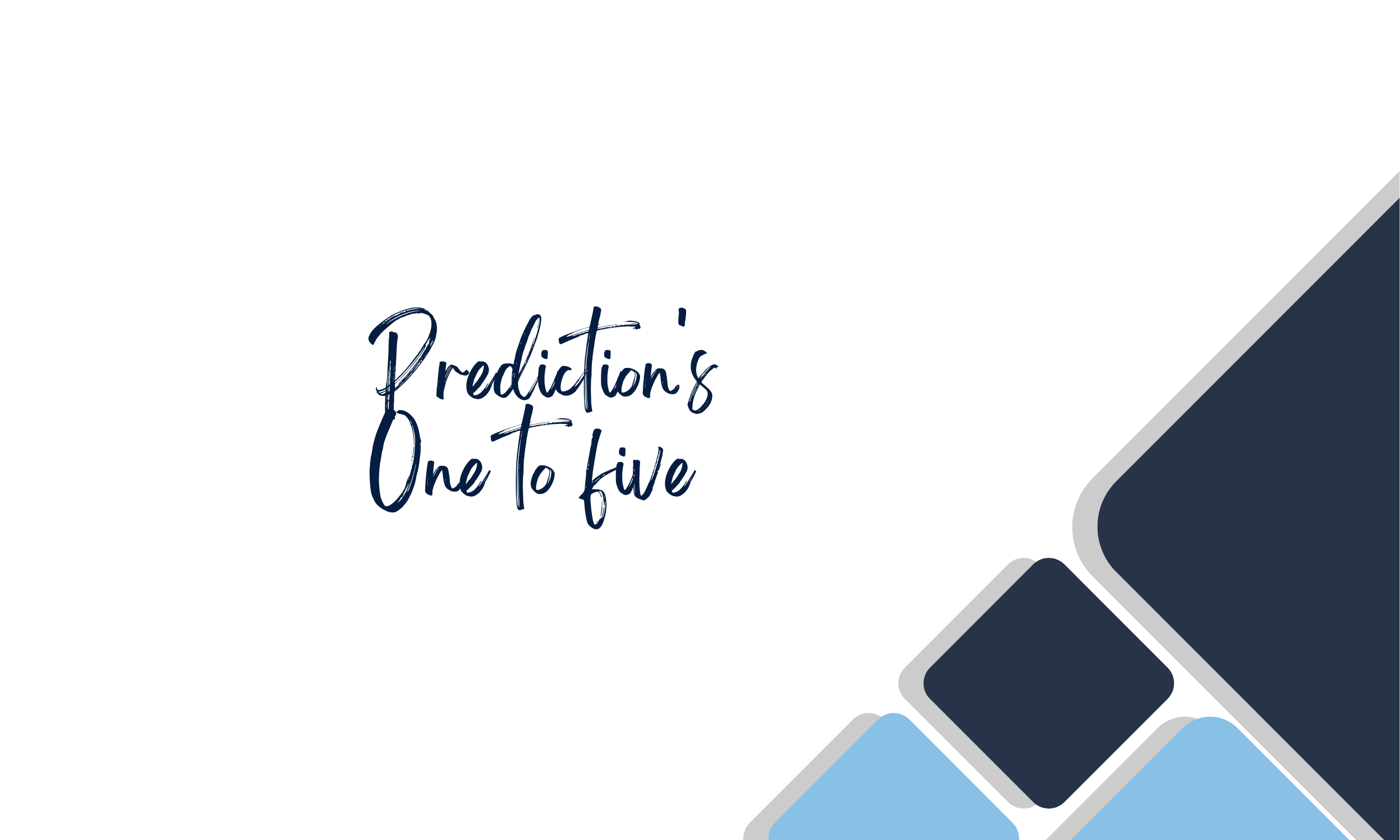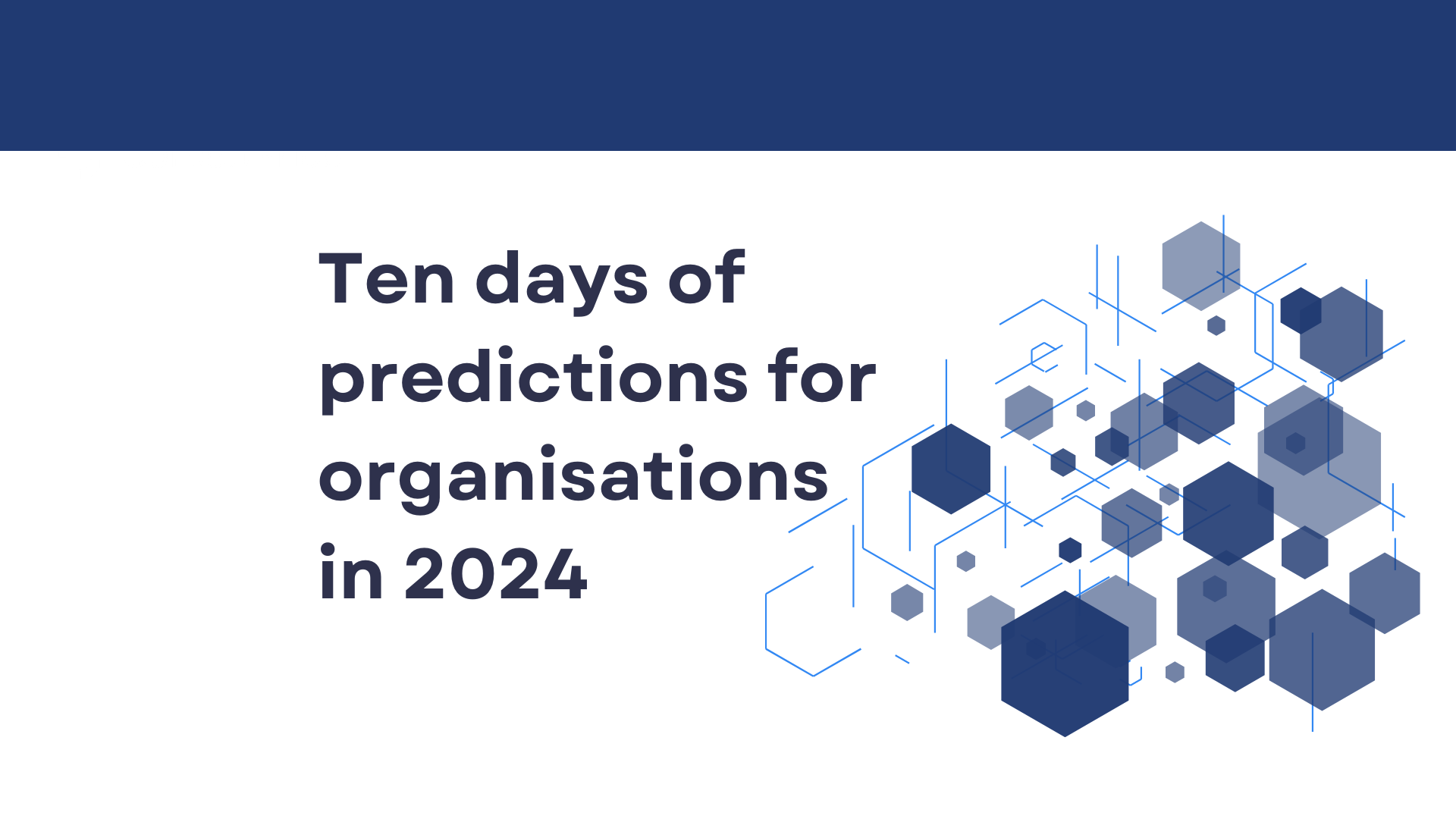
Over the past year, we’ve seen a shift in focus by government as it continues to respond to continual times of volatility, uncertainty, complexity, and ambiguity (VUCA). As we look to another year of such conditions, the needle must move from short-term responses to long-term planning, and governments must be resilient and future-fit to grow and transform. As The Mandarin reported from a recent SES briefing, the NSW Premier spoke about short-term responses and long-term thinking concerning the recent flooding across NSW. These approaches show the key difference between crisis response and future readiness, ultimately moving beyond response to resilient, future-fit governments.
Forrester’s recent Asia Pacific Predictions 2023 report positions that leading business organisations must be “Bold” and “Focused.” These sentiments are just as true for the public sector as they are for the private sector. There are other factors to consider with growth and transformation and ensuring that change doesn’t tip the scales off balance when it comes to sustainability, building resilience, and empowering employees. Change in service delivery to citizens must also have a clear purpose to improve outcomes and restore citizen trust rather than lose it.
Finding the right balance
For transformations to be successful in government, there is a cultural roadblock to overcome. As detailed in our article: Finding the way forward – Agility at scale within government, culture can be the main reason why implementations fail. It’s critical then that employees can connect what they are doing with why they are doing it to drive engagement and strengthen culture. Two of the four priorities outlined in the APS Reform Agenda focus on talent and culture, specifically attracting, retaining, training, and empowering employees.
You can't transform successfully if you don't change how you work
A recent article from the Courier Mail stated that over the past twelve months, over 10,000 public sector workers in Queensland have resigned. The QLD Auditor-General, who’s completed several audits of the QLD Public Sector, has said that the talent shortages will continue as workforce planning “is not sophisticated enough to build and grow a workforce that can meet changing needs and priorities.” His recommendations are for better approaches to be implemented in the creation of a skilled workforce that has the ability to respond and adapt promptly to challenges, takes opportunities to embrace new technology through digital transformation, and designs effective strategies that attract and retain staff through a strong purpose, modern recruitment processes, and a flexible working structure.
Further, The Mandarin recently shared an example from the ACT Director-General who gave a speech relating to her team's 'one service' approach in responding to COVID-19, which established a culture of collaboration and resulted in staff having greater work satisfaction.
Restoring and building citizen trust
According to the recently published Trust in Australian public services: 2022 Annual Report (Tap report), there has been an increase in citizen trust during the pandemic. Still, it’s easy to see how quickly this can be lost with events such as the inquiry into robodebt and recent cyberattacks. An interesting insight from the Tap report reveals that while the overall trust in Australian public services is 61%, there is an inconsistency in the trust and satisfaction between citizen groups and different government services. For example, in 2022, 81% of people trusted the ATO services, but only 63% trusted the Centrelink services they used. At the end of the day, citizens want the reassurance that the public services they use have their best interests in mind to deliver the best possible outcomes. They expect this will have minimal disruption to their everyday lives.
The twelve days of 2023 predictions for government
We developed our prediction series to detail the key transformations government organisations need to focus on in 2023. With each prediction, we have provided possible approaches and actions that public sector executives can take to succeed, along with further links to our thought leadership articles and case studies, including outcomes. The full list of predictions is complete below.
#1 - Response Transformation
Climate change action and preparedness is critical and will continue to increase in importance.
In addition to re-joining the conversation at the recent COP27 event, meeting the 2030 emissions target set, and defining the role to play in the exportation of clean energy commodities and critical minerals, government organisations must ensure that they are resilient and future-fit concerning the increasing number of climate-related events occurring in the form of natural disasters. Taking a long-term view of future readiness is critical in protecting and saving lives. We cover this in more detail in our article: Beyond resilience – transforming through Black Swan events
#2 - Digital transformation
Meeting future needs must go beyond digitisation to make a lasting impact.
Adopting robotic process automation (RPA) to existing processes matters in terms of increasing the efficiency and effectiveness of internal processes, but it isn’t enough to realise true transformation. In our article: Digital Transformation - create a butterfly, not a faster caterpillar, we explain further the difference between digitisation and transformation, which is about looking to the future and being able to meet the needs of uncertainty ahead.
#3 - Service transformation
Governments will continue to focus on changing how they respond and collaborate to meet changing citizen needs.
As the APS workforce evolves and works towards “operating as one enterprise, with a high-performing workforce,” significant strides need to take place in adopting new ways of working and collaborating to deliver better outcomes. An agile operating model transforms a traditionally structured organisation into an adaptive and responsive one through a network of teams that have a unified and defining purpose and are configured around delivering outcomes. We have provided an in-depth overview of this in our article: Finding the way forward – Agility at scale within government
#4 - Talent transformation
The APS must win the war on talent.
Two priorities in the APS Reform Agenda announced by Senator Gallagher were that the APS would be a model employer and that the APS would have the capability to do its job well. The Thodey Review of 2019 acknowledged that the underlying capacity of the APS had weakened over time, and many recent reports, reviews, and actions talk extensively about skill shortages, remuneration, and losing the talent war to the private sector. The ‘how’ in actioning the APS Reform Agenda is taking an operating model approach to transform and empower staff to deliver service excellence with an improved culture. We discuss this further and provide actual case studies in our article: Getting down to business – the “how” in actioning the APS Reform Agenda
#5 - Team transformation
There will be less focus on where and more focus on what with workplace flexibility.
If teams are unified in a purpose and configured around delivering outcomes, it shouldn’t matter where they work. In the recent ANZSOG Research Insights Report titled: Flexible working in the Australian Capital Territory Public Service (ACTPS), key research demonstrated that employees in the ACTPS valued working flexibly, and this contributed to higher employee retention. Further, essential elements identified as needed to make flexible working effective included: the need for an outcomes-oriented approach to working, a need for a purposeful approach to working from the office, and a need for a team-based approach to working. Significant changes to how we work can result in significant challenges, especially with existing cultural mindsets. We talk about overcoming the cultural roadblock further in our article: Finding the way forward – Agility at scale within government
#6 - Performance transformation
Achieving optimal agency capability will need to empower employees, not discourage them.
Changing customer needs and expectations are driving agencies to become more effective and efficient in their service delivery. To determine, design, and implement lasting change that engages and empowers employees resulting in a strengthened culture, you need to get to the root cause of your performance problem and create an actionable plan to transform your organisation. Our North Star Program can help organisations to get out of the rut for good by identifying long-term solutions.
#7 - Data transformation
Knowing your data, where it’s stored, and who can access it is more mission-critical than ever with increasing cyber-attacks.
Equally, how data is collected and analysed can make a significant difference in citizens’ lives through effective and efficient decision-making and resource allocation. But data and cloud storage solutions have many complexities and moving parts, and in the case of government, proper readiness is essential for digital transformation. Readiness involves understanding all the elements of your end-to-end value chain, including how your infrastructure fits into your operating model design. Read more about our holistic transformational approach (DISCOVER, DESIGN, SUSTAIN) in our article: Digital Transformation - create a butterfly, not a faster caterpillar.
#8 - Cultural transformation
Working together in a whole-of-government approach isn’t just for black swan events; it’s business as usual.
We’ve seen the benefits of whole-of-government strategies to key crisis events such as natural disasters and the COVID-19 pandemic on citizens and communities. This anti-silo, ‘one enterprise’ approach demonstrates the enormous potential in how service delivery can be transformed to improve citizen satisfaction and restore trust in the government by helping to make their lives easier and less disruptive when unknown events arise. But a key threat in effective customer service is the responsibility and accountability dilemma. And to overcome this, you need a plan which involves mapping out your overall value chain and determining how services can be delivered in the best way possible. Read more about our approach in our article: Passing the buck – who is responsible, who is accountable?
#9 - Solution transformation
Delivering a seamless customer experience will take more than implementing stopgap solutions.
Plug and playing quick fixes to improving service delivery rarely ever fixes the problem; in our experience, it usually results in the opposite, where customers receive a disjointed or disconnected experience. A bigger picture is needed to drive performance improvements and increase customer satisfaction. This picture needs to show how your people, organisation, culture, processes, tools, technology, governance, and measures work across your value chain to deliver services to your customers. Find out more about this approach and how to drive service improvements through our North Star Program
#10 - Risk transformation
Governments need to evolve in managing and reducing risk responsibly.
As citizens continually seek and expect security and reassurance from the government in uncertain times, governments must change how they plan and prepare for such unknown events to become resilient and future-fit. An operating model approach can help governments to manage and reduce risk responsibly through scenario planning involving iterative piloting, scenario testing, modifications, and buffers. These measures are essential to identify the areas where improvements would need to be made over time and to ensure that planning for these takes place accordingly. You can read more about this in our article: Beyond resilience – transforming through Black Swan events.
#11 - Leadership transformation
Leading with clarity and purpose will drive better engagement with staff and citizens.
Seeking better connections with teams and customers requires doing new things and doing them differently. But this can be easier said than done with mounting challenges such as Machinery of Government changes, the need to do more with the same, the acceleration of digitisation, and the increasing need to restore citizen trust. Gaining a common understanding of the business and current challenges is the foundation for any changes to occur in the future. An operating model approach provides this clarity by documenting the current Operating Model through our BE HOLISTIC™ framework. Read more about this in our article: 5 reasons why public sector executives benefit from an operating model approach.
#12 - Experience transformation
Adopting human-centred approaches to delivering holistic services to citizens will increase.
Having a deep understanding of citizen needs around significant life events can help to design new strategies that increase service program effectiveness. Complex societal problems can be addressed differently when information and resources are aligned and integrated around a cluster of specific needs. We explore how an agile operating model approach can help to create high-performing teams to achieve these transformational outcomes in our article: Finding the way forward – Agility at scale within government.
Taking action in 2023
Do you need to move from short-term responses to long-term solutions across any of these key areas to be fit for the future?
How is your team culture? Are they unified in purpose and working together across departments effectively and efficiently?
Is your team finding it difficult to keep up and meet changing needs of customers?
Have solutions and strategies you’ve adopted failed to make an impact and deliver results?
We hope you have enjoyed reading our predictions series and are encouraged to move forward confidently into 2023. If, in reading our series, there are key areas that stood out to you that you would like to explore further, please get in touch with us. We can help you with your transformation journey by diagnosing where problems may lie and prescribing a solution to move forward.







